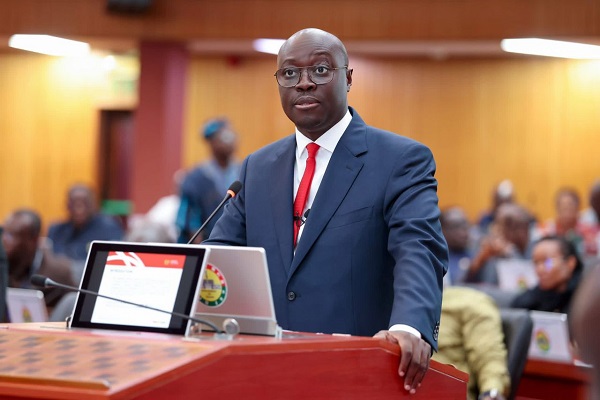2026 Budget: Gov’t expenditure rises by 12.4% to GH₵302.5 billion


Finance Minister Dr. Cassiel Ato Forson, in presenting the 2026 Budget Statement to Parliament on November 13, heavily emphasised a strategic increase in government spending aimed at jumpstarting economic growth through infrastructure.
The budget allocates a substantial GH₵302.5 billion in total expenditure, with a clear focus on boosting Capital Expenditure (CAPEX) to fund flagship projects.
This is a rise of 12.4% from the estimated GH¢269.1 for 2025.
The minister’s statement detailed the disciplined yet expansionary fiscal plan, which aims to bridge a GH₵34.4 billion deficit while ensuring resources are channelled into productivity-enhancing sectors.
Total Expenditure Programmed at GH₵302.5 Billion
Total Expenditure on a commitment basis for the 2026 fiscal year is programmed at GH¢302.5 billion, representing 18.9 percent of GDP.
This figure represents a notable increase of 20.1 percent over the projected expenditure for 2025, reflecting the government’s dual commitment to macroeconomic stability and targeted investment.
The overall fiscal framework seeks to maintain the required 1.5 percent Primary Surplus while making crucial investments. As Dr. Forson noted:
“Mr. Speaker, this fiscal framework is not just a set of numbers, it is a roadmap for sustained stability and inclusive growth.”
The Capital Expenditure Surge
A key highlight of the expenditure plan is the massive allocation towards Capital Expenditure (CAPEX).
- Total CAPEX Projection: Capital Expenditure is projected at GH¢57.5 billion, which is equivalent to 3.6 percent of GDP. This allocation underscores the government’s belief that investment in physical infrastructure is essential for long-term productivity and competitiveness.
- ‘Big Push’ Initiative: Of the total CAPEX, a significant portion—specifically GH¢30.0 billion—has been earmarked for the ‘Big Push Infrastructure Programme’. This centralized funding is expected to accelerate key national infrastructure projects, including roads, energy, water systems, and digital connectivity, designed to have a high impact on economic activity.
Detailed Breakdown of Expenditure Components
The overall expenditure of GH₵302.5 billion is composed of several critical components:
- Primary Expenditure: Primary Expenditure (excluding interest payments, a major burden on the national budget) is projected at GH¢244.7 billion, equivalent to 15.3 percent of GDP. This figure represents the core operational spending capacity of the government.
- Compensation of Employees: The budget allocates GH¢90.8 billion (5.7 percent of GDP) for the Compensation of Employees. This figure includes provision for a 9% negotiated increase in base pay for public servants under the Single Spine Salary Structure (SSSS), ensuring that public service delivery is adequately compensated.
Financing the GH₵34.4 Billion Deficit
The government projects a deficit of GH₵34.4 billion for 2026. This gap, however, is planned to be financed primarily through domestic means to avoid excessive external borrowing during the current period of fiscal restructuring.
- Domestic Financing: This is estimated to amount to GH¢71.0 billion, which translates to 4.4 percent of GDP. This will be sourced mainly through the issuance of government securities on the domestic market.
The minister concluded with an affirming statement on the budget’s underlying philosophy:
“It represents a disciplined yet forward-looking budget: one that invests wisely, spends efficiently, protects the vulnerable, and restores full confidence in Ghana’s economy.”
DISCLAIMER: The Views, Comments, Opinions, Contributions and Statements made by Readers and Contributors on this platform do not necessarily represent the views or policy of Multimedia Group Limited.
DISCLAIMER: The Views, Comments, Opinions, Contributions and Statements made by Readers and Contributors on this platform do not necessarily represent the views or policy of Multimedia Group Limited.
Source link




